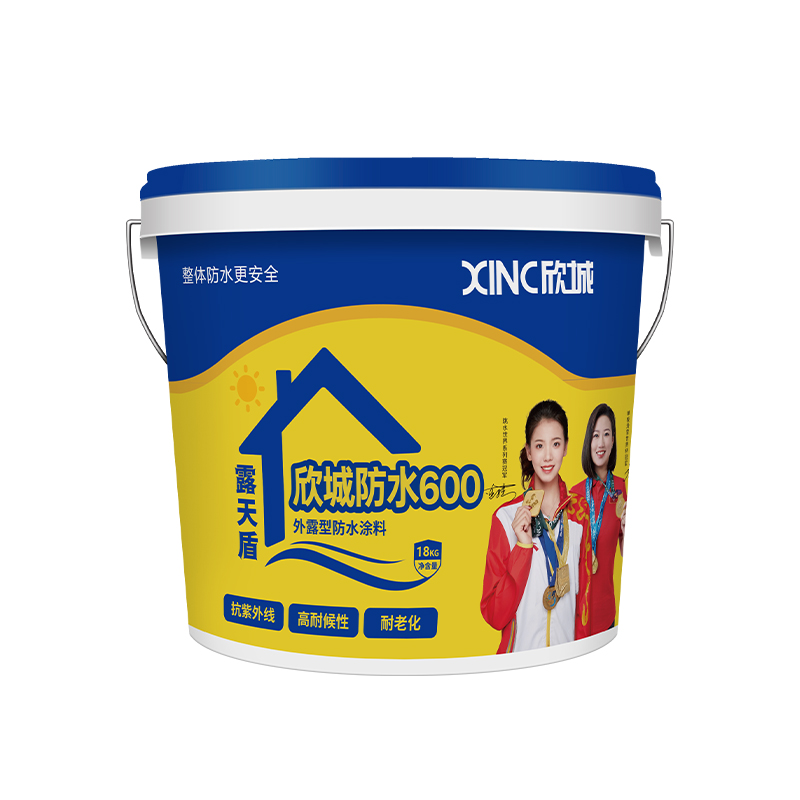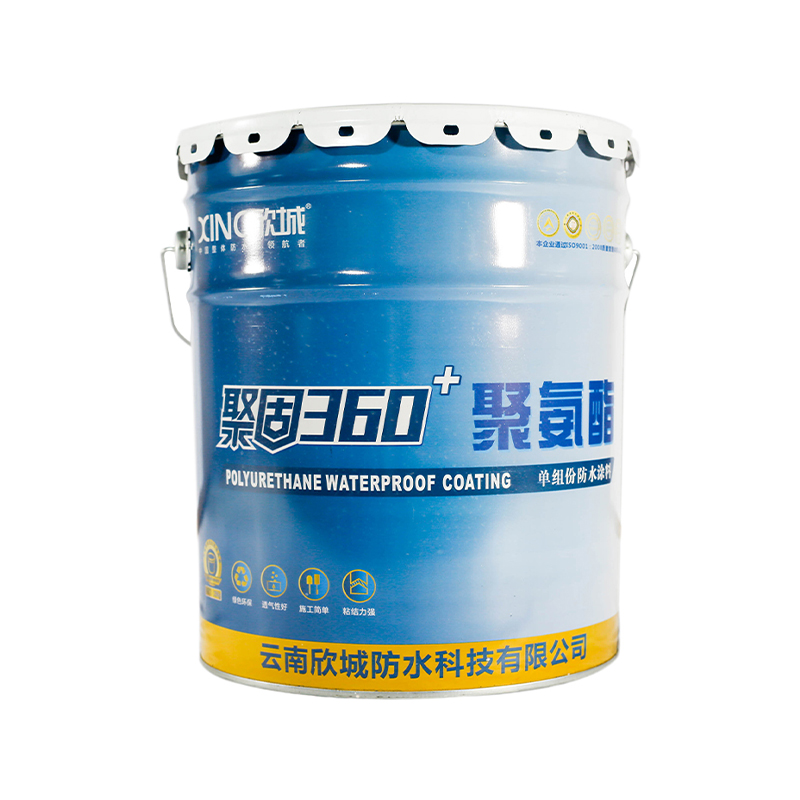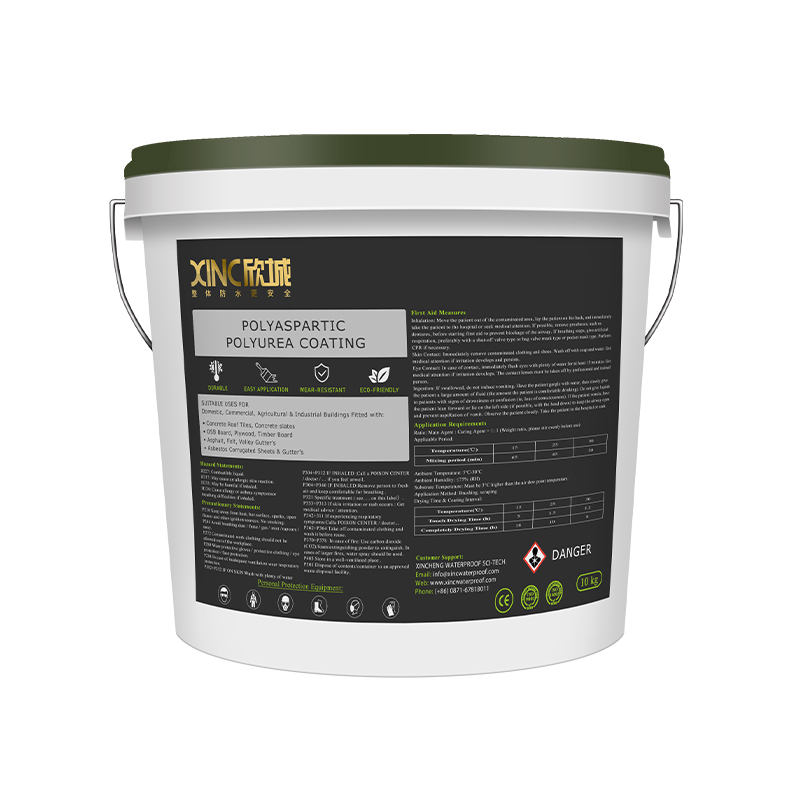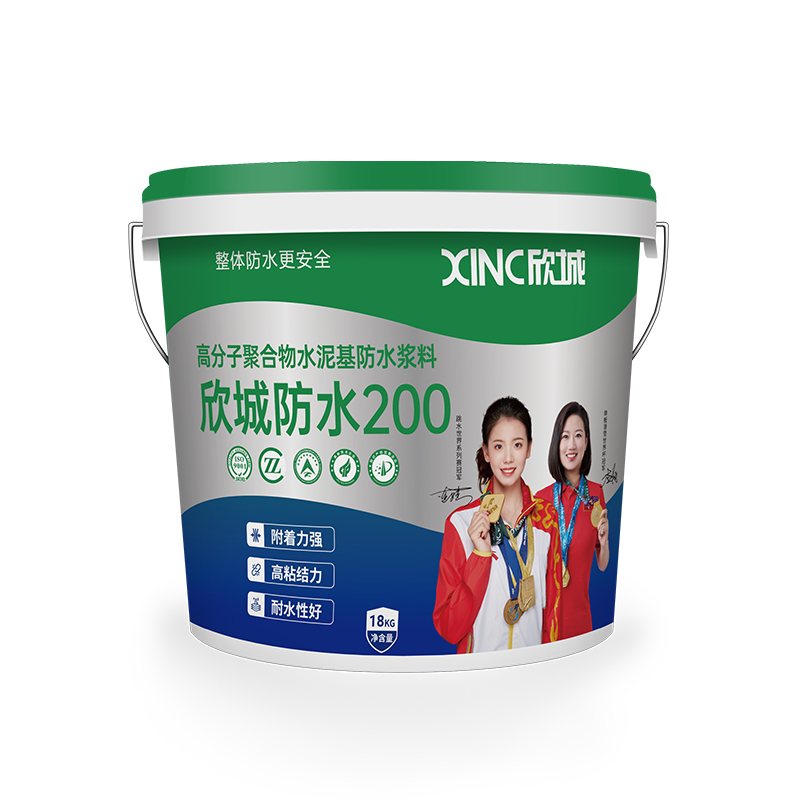How does water-based polyurethane waterproof coating achieve a balance between environmental performance and high film strength?
Release Time : 2025-09-29
With the continuous advancement of building waterproofing materials, the dual demands of environmental protection and performance are driving a shift from traditional coatings to green polymer materials. As a new generation of environmentally friendly waterproofing products, water-based polyurethane waterproof coatings have rapidly become a preferred material for industrial and residential construction, thanks to their water-based dispersion medium, low VOC emissions, and odorlessness. However, environmental protection does not mean sacrificing performance—quite the contrary. Modern water-based polyurethane waterproof coatings maintain excellent environmental properties while demonstrating high film strength and overall performance that rivals or even surpasses traditional solvent-based products. This perfect balance of "green" and "strong" is the core of their technology.
1. Green Base: Using Water Instead of Solvents, Achieving Environmental Protection at the Source
Traditional polyurethane waterproof coatings often use organic solvents such as toluene and xylene as dispersion media. During application, they emit large amounts of harmful gases, polluting the environment and posing a health risk to construction workers. This transformation cannot be achieved by simply "changing the water." Waterborne polyurethane emulsions undergo a special process to modify the hydrophobic polyurethane molecular chains to make them hydrophilic. Hydrophilic groups such as carboxyl groups, sulfonic acid groups, or polyether segments are introduced, enabling stable dispersion in water. This molecular design not only ensures the emulsion's storage stability but also lays the foundation for efficient cross-linking during the subsequent film-forming process, achieving a balance between environmental protection and material stability.
2. Molecular Cross-linking: Constructing a High-Strength, Highly Elastic Three-Dimensional Network
The film strength of water-based polyurethane waterproof coatings is a key performance metric, particularly crucial for addressing structural deformation and thermal cracking. Waterborne polyurethane uses advanced synthesis technology to construct polymer chains with a "soft segment-hard segment" phase-separated structure within the emulsion. The soft segments impart excellent flexibility and elongation, reaching up to 800%-1000%, while the hard segments provide strong hydrogen bonds and crystalline regions, forming the material's "backbone." After application, the water gradually evaporates, allowing the latex particles to compact and fuse. As water evaporates, the distance between molecular chains shortens, and the hard segments form physical crosslinks through hydrogen bonding and microphase separation. Some products also employ a two-component design, adding a crosslinker to achieve chemical crosslinking, further enhancing the coating's density, tensile strength, and tear resistance. This dual "physical + chemical" crosslinking mechanism ensures the resulting waterproof membrane possesses both high elasticity and strength, effectively bridging microcracks in the substrate and deforming freely with structural expansion and contraction, truly achieving the goal of "using softness to overcome hardness."
3. Interface Fusion: Strong Adhesion Rooted in Molecular Anchoring
The high film strength of water-based polyurethane waterproof coatings is reflected not only in the coating itself but also in its strong bond to various substrates, such as concrete, mortar, and metal. The polar groups in the waterborne polyurethane molecular chains form strong hydrogen bonds and chemical adsorption with silanol groups or metal oxides on the substrate surface, creating a "molecular anchoring" effect. Furthermore, water-based systems are more adaptable to damp substrates than oil-based coatings. The presence of moisture not only doesn't hinder film formation, but actually facilitates the diffusion and cross-linking of polyurethane molecules in humid environments, ensuring a continuous, dense waterproof barrier even in high-humidity environments like basements and bathrooms.
Through systematic optimization of molecular design, emulsion synthesis, and film-forming mechanisms, water-based polyurethane waterproof coating has successfully overcome the industry's dilemma of sacrificing strength for environmental protection. This represents not only an advancement in coatings technology but also the implementation of the concept of sustainable development in architecture—protecting building safety while also safeguarding human health and the ecological environment.
1. Green Base: Using Water Instead of Solvents, Achieving Environmental Protection at the Source
Traditional polyurethane waterproof coatings often use organic solvents such as toluene and xylene as dispersion media. During application, they emit large amounts of harmful gases, polluting the environment and posing a health risk to construction workers. This transformation cannot be achieved by simply "changing the water." Waterborne polyurethane emulsions undergo a special process to modify the hydrophobic polyurethane molecular chains to make them hydrophilic. Hydrophilic groups such as carboxyl groups, sulfonic acid groups, or polyether segments are introduced, enabling stable dispersion in water. This molecular design not only ensures the emulsion's storage stability but also lays the foundation for efficient cross-linking during the subsequent film-forming process, achieving a balance between environmental protection and material stability.
2. Molecular Cross-linking: Constructing a High-Strength, Highly Elastic Three-Dimensional Network
The film strength of water-based polyurethane waterproof coatings is a key performance metric, particularly crucial for addressing structural deformation and thermal cracking. Waterborne polyurethane uses advanced synthesis technology to construct polymer chains with a "soft segment-hard segment" phase-separated structure within the emulsion. The soft segments impart excellent flexibility and elongation, reaching up to 800%-1000%, while the hard segments provide strong hydrogen bonds and crystalline regions, forming the material's "backbone." After application, the water gradually evaporates, allowing the latex particles to compact and fuse. As water evaporates, the distance between molecular chains shortens, and the hard segments form physical crosslinks through hydrogen bonding and microphase separation. Some products also employ a two-component design, adding a crosslinker to achieve chemical crosslinking, further enhancing the coating's density, tensile strength, and tear resistance. This dual "physical + chemical" crosslinking mechanism ensures the resulting waterproof membrane possesses both high elasticity and strength, effectively bridging microcracks in the substrate and deforming freely with structural expansion and contraction, truly achieving the goal of "using softness to overcome hardness."
3. Interface Fusion: Strong Adhesion Rooted in Molecular Anchoring
The high film strength of water-based polyurethane waterproof coatings is reflected not only in the coating itself but also in its strong bond to various substrates, such as concrete, mortar, and metal. The polar groups in the waterborne polyurethane molecular chains form strong hydrogen bonds and chemical adsorption with silanol groups or metal oxides on the substrate surface, creating a "molecular anchoring" effect. Furthermore, water-based systems are more adaptable to damp substrates than oil-based coatings. The presence of moisture not only doesn't hinder film formation, but actually facilitates the diffusion and cross-linking of polyurethane molecules in humid environments, ensuring a continuous, dense waterproof barrier even in high-humidity environments like basements and bathrooms.
Through systematic optimization of molecular design, emulsion synthesis, and film-forming mechanisms, water-based polyurethane waterproof coating has successfully overcome the industry's dilemma of sacrificing strength for environmental protection. This represents not only an advancement in coatings technology but also the implementation of the concept of sustainable development in architecture—protecting building safety while also safeguarding human health and the ecological environment.







